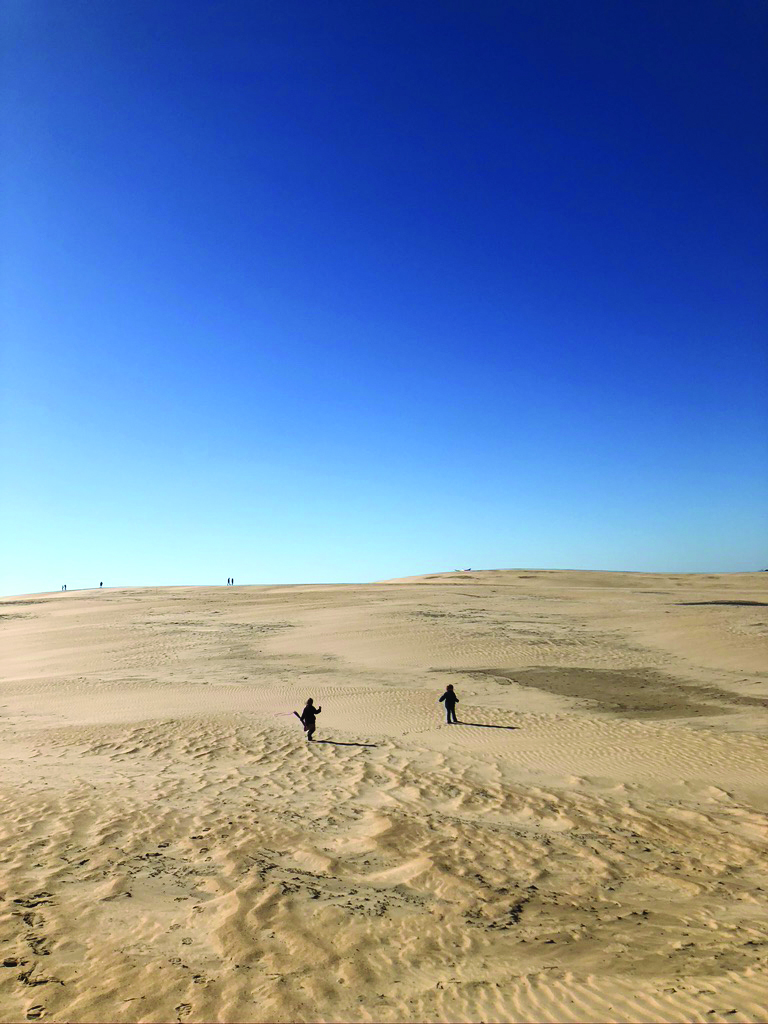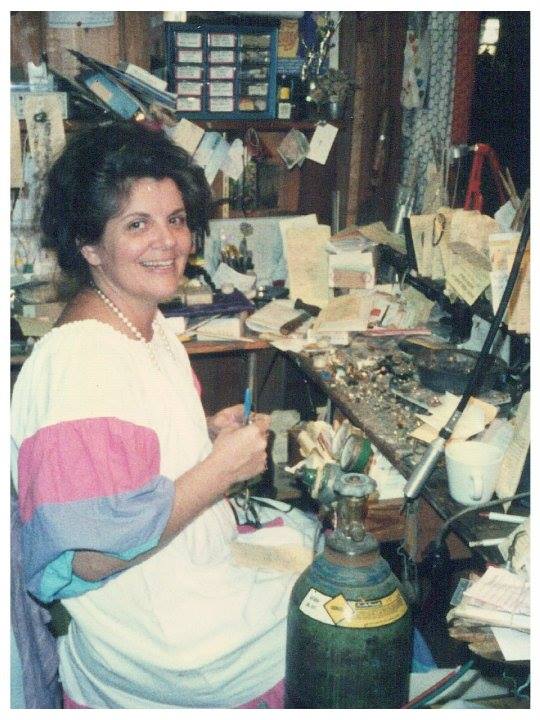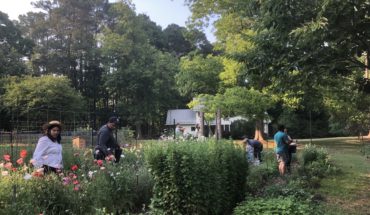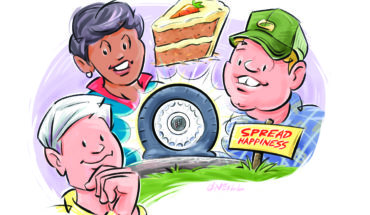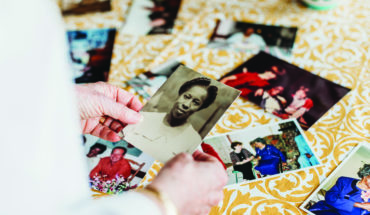In 1973, Carolista Baum stood in front of a bulldozer to protect a dune her children loved to explore. It’s now North Carolina’s most-visited state park.
by Addie Ladner
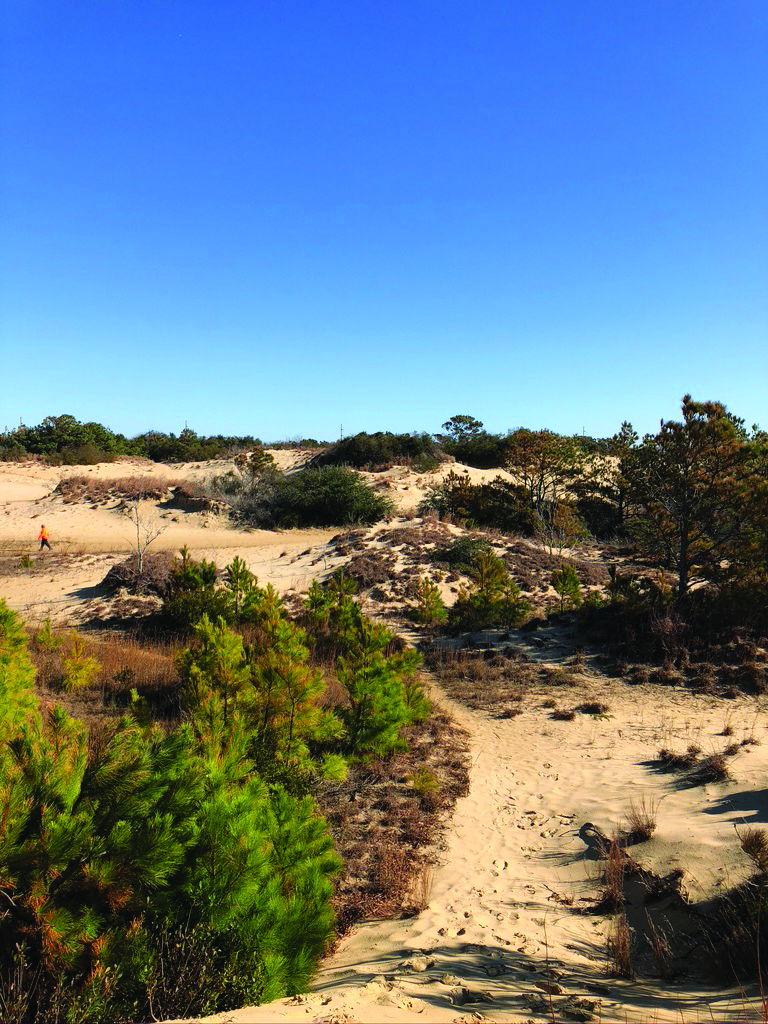
Jockey’s Ridge State Park in Nags Head is known for its mesmerizing, massive dunes. The highest caps 60 feet, anchoring a more than 400-acre park with panoramic views of the Atlantic Ocean and Roanoke Sound. Here, kids can roam free. You can fly a kite, watch a sunset, hang glide, or walk in the sand for miles. It’s North Carolina’s most visited state park, yet the ample space makes it hard to tell. And we have the efforts of a local mother, jewelry maker, and hell-raiser named Carolista Baum to thank for it.
Carolista, who was born in 1940, and her family were based in Chapel Hill, but every summer she’d close up the shop she ran with her then-husband and move to Nags Head, kids in tow, to run their second shop. Along the Outer Banks, she was known for her dynamic, generous personality and free-form, handcrafted jewelry. “I still run into someone every so often who tells me my mom tipped them a pair of earrings,” remembers her oldest daughter, Ann-Cabell.
Their summer home was just across U.S. 158 (“The Bypass” to locals) from The Ridge, as the dunes were known then, near the 12-mile post. “In the ‘70s as a kid, you got on your bike, and as long as you’re home for dinner, it was fine,” Ann-Cabell says. She and her siblings, Inglis and Gibbs, explored The Ridge everyday while their mom worked. There, they spent hours jumping off its highest peaks and looking for tadpoles in tidal pools.
But their sandbox wasn’t public land, and many of its owners had visions of real estate development. One summer evening in 1973, Ann-Cabell says the troupe was about to bike home when they saw a bulldozer grading the sand. They ran to tell their mom. “Mom walked over and stood in front of it, and with her nice Eastern North Carolina voice said, I’m not moving,” says Ann-Cabell. The driver of the bulldozer stopped, hopped off, and went home. Carolista went home, too — along with the bulldozer’s distributor cap and a plan.
She formed a group called The People to Preserve Jockey’s Ridge, which raised funds to try to purchase the land by selling memorabilia like T-shirts, records, and placemats. Signs that read S.O.S Save our Sand Dunes! and Buy a Piece of The Ridge were seen all over town. Carolista made countless phone calls to land owners, asking them to donate or sell their land to her group. She drove to Raleigh every morning for a week until Gov. James Hunt heard her out. “It was never a no for her,” says Ann-Cabell. “If mom was determined to do it, it would happen.”
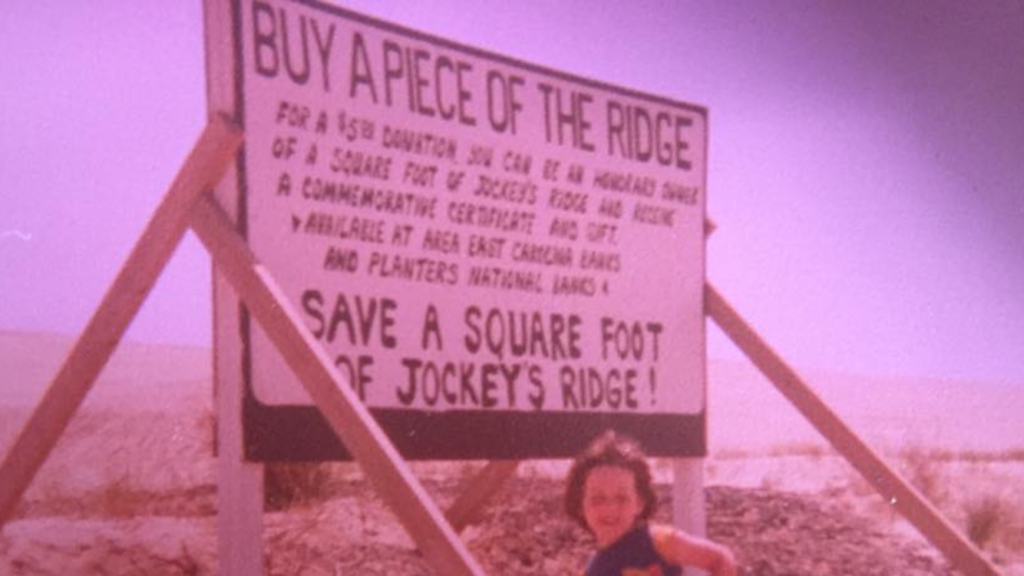
It took nearly two years of relentless community rallying. In April 1975, the state of North Carolina voted to purchase the land surrounding the dune to form Jockey’s Ridge State Park. Shortly thereafter, it was designated a National Natural Landmark. The entrance to Jockey’s Ridge now sits on Carolista Drive, a road dedicated to Carolista after she passed away from a brain melanoma at 50. Her children still mourn and admire the extraordinary woman who was their mother. Says Ann-Cabell: “Inglis looks so much like her and my brother Gibbs has her laugh. When we’re together, she’s there.”
______
This article originally appeared in the May, 2022 issue of WALTER Magazine

